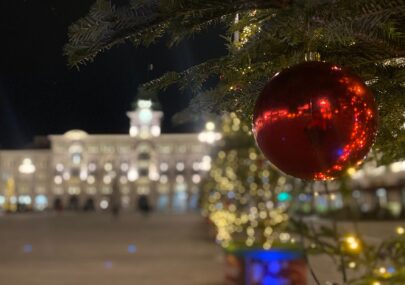
Traditional sweets from Trieste: a crossroads of cultures
Easter is about to arrive in Trieste, and with it comes the time to bake and taste many delicacies and treats belonging to Trieste's rich culinary tradition, characterised by elements and preparations originating in neighbouring former Yugoslavia and Austria, not to mention the Karst culture. Given the importance of Easter celebrations in Italy, it is no surprise that the dishes associated with it are so renowned and appreciated by both locals and the many tourists who storm the historic Julian capital every year. Below, we propose some of the most famous Easter dishes in Trieste.
Pinza
The pinza is probably the main course of Trieste's tradition: it is a brioche to which it is customary to accompany jams and sweets as well as various cheeses and cold cuts. According to Trieste tradition, those who eat it must make a few cuts at the top of the pastry dough before tasting it. These cuts, of course, have a symbolic meaning, since they represent the martyrdom and sufferings of Jesus Christ.
Titole and nidi
Another highlight of Trieste's culinary tradition: titole and nidi. These two dishes are prepared with the same dough as the pinza and are intended for children, just like the famous chocolate eggs: to make them, you have to twist the dough of the pinza and insert a hard-boiled egg inside to decorate it. Tradition has it that the nidi were meant for boys, while the titole (like the ones pictured) were meant for girls.
Putizza
Another popular Easter cake in Trieste is the putizza, made with a long leavened dough and a filling consisting mainly of spices, honey and dried fruit. Its name is very similar to that of the Slovenian potica, with which it shares the root of the verb poviti (to wrap, to roll). Its shape is that of a snail and once cut, it has the appearance of a spiral that alternates between the dark and very aromatic filling and the very soft dough.
In addition to these sweets, in the past, the tables of Trieste's homes also featured the inevitable spalletta boiled or baked in bread, the aleluja (a poor man's cake eaten on Good Friday, consisting of a boiled turnip sautéed in butter with breadcrumbs and sugar), as well as other typical foods such as horseradish, roast lamb, patate in tecia, the characteristic fennel flowers, broth with noodles and much more, testifying to the culinary variety and richness of Trieste and its picturesque surroundings.






Lascia un commento